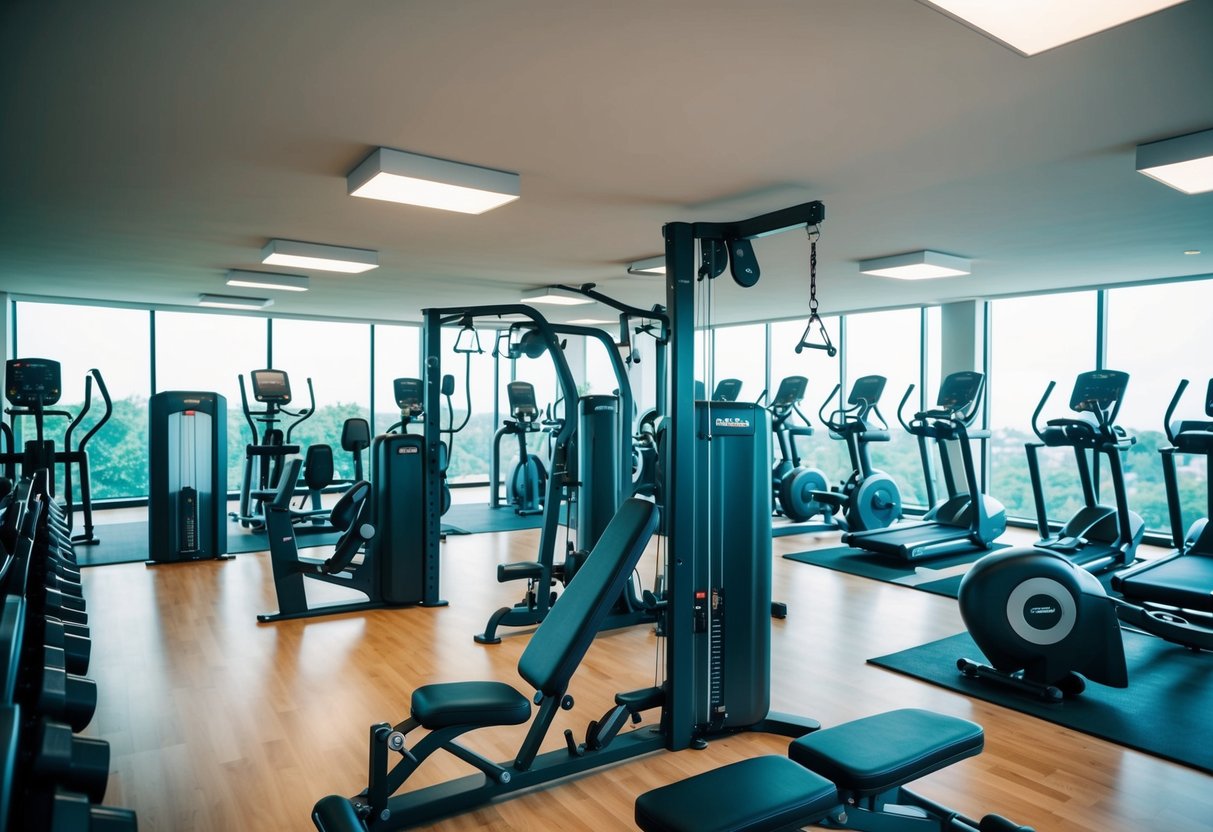
Exercise Demonstrations and Technique
Mastering exercise techniques is crucial to achieving optimal workout results and minimizing the risk of injuries. This section covers essential form guidance for major lifts and strategies to avoid common workout pitfalls.
Perfecting Form for Major Lifts
Correct form in major lifts like the squat, bench press, and deadlift is essential for safety and effectiveness. The squat requires a straight back, knees aligned with toes, and descent to parallel for full activation. When performing push-ups, elbows should remain close to the body, and the core must be engaged throughout.
Deadlifts demand a straight back and shoulders retracted to prevent strain. Lunges, another fundamental move, require knee alignment over the ankle to prevent injury. Attention to these details enhances performance and results.
Avoiding Common Mistakes and Injury Prevention
Common mistakes such as rounding the back during deadlifts or letting knees cave in during squats can lead to injuries. Maintaining correct form by focusing on posture and using mirrors or feedback from others can help.
Warm-ups and gradual progression in weight are essential to minimize risks. Including stretches targeted at major muscle groups used in bigger lifts helps prevent strains. A consistent focus on technique, rather than weight, ensures longevity in any fitness journey.
Strength Training and Conditioning
Combining strength training with conditioning can boost overall fitness. Strength training builds muscle mass, while conditioning exercises improve cardiovascular health and endurance.
Integrating Cardio and Resistance Training
Combining cardio with resistance training can enhance strength and conditioning simultaneously. Cardio exercises such as running, cycling, or rowing increase heart rate and improve cardiovascular fitness, which boosts stamina and aids recovery. When paired with resistance exercises like squats or deadlifts, this integration helps enhance strength and conditioning. Performing supersets, where cardio follows a set of resistance exercises without rest, can improve muscular endurance more effectively. For those targeting both strength and aerobic capacity, combining these workouts within the same session or alternating them throughout the week can yield balanced results.
Developing Muscular Endurance and Power
Muscular endurance focuses on the ability to sustain repeated muscle contractions over time. Exercises like high-rep squats or push-ups are vital for improving endurance. Performing these exercises for AMRAP (As Many Reps As Possible) helps in increasing repetitions over time. Power training, on the other hand, emphasizes quick, explosive movements. Olympic lifts such as the clean and jerk or plyometrics like box jumps are excellent for building power. By incorporating a mix of both high-rep endurance exercises and low-rep power-focused exercises into their routine, individuals can develop a well-rounded strength and conditioning program, improving overall athletic performance.
Specialized Workouts and Techniques
Specialized workouts offer unique approaches to improve fitness and strength. These methods often involve increased training volume and intensity, targeting different muscle groups more effectively.
Utilizing Supersets and Burnouts
Supersets involve performing two exercises back-to-back without rest. This technique enhances workout intensity by increasing training volume. It is efficient for maximizing muscle engagement within a shorter time. For example, combining bicep curls with tricep extensions targets opposing muscle groups, providing a balanced workout.
Burnouts push the muscles to exhaustion by doing high-rep sets at the end of a workout session. This promotes muscle endurance and growth, challenging muscle fibers to adapt to greater demands. These methods are ideal for those looking to improve muscle tone and overall strength.
Exploring Unconventional Training Types
Unconventional training types add variety and can improve overall fitness. Interval training, which alternates between high-intensity efforts and short rest, boosts cardiovascular health and stamina. This approach helps enhance performance in activities like running or cycling.
Bodyweight training and exercises like burpees incorporate functional movement, aiding in agility and coordination. Trisets, which involve three exercises consecutively, further intensify workouts. This method supports muscle endurance and time efficiency by focusing on specific muscle groups without extensive equipment.



